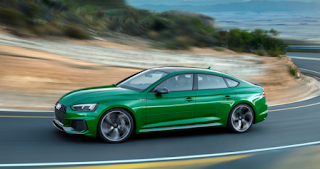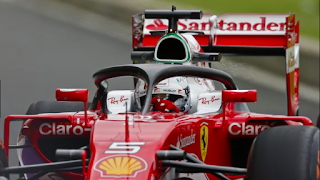A Beginner's Guide to the World of Cars
If you aren't yet versed in car terminology, or the current state of the automotive world, then this is a post to get you up to speed. I'll start with a bit of a glossary, so for the beginners, these words should make a bit more sense now.
-bhp: An acronym standing for 'brake horsepower'. This has the effect of making an engine sustain an input under more and more stress. Most sports cars have over 340bhp, most supercars over 550, and most hypercars over 750.
-Torque (measured in lb ft): This is the amount of force an engine creates to push the car forward. Most cars have similar torque figures to power figures, but diesel cars and hybrids often push well above their weight. (Figuratively speaking, as most of them are very heavy)
-Kerbweight: The weight of a car with no fuel, fluids or driver in it. Quite literally, the sum of a car's parts. A normal car weighs around 1600kg, an SUV about 2 tonnes and a supercar about 1300. We all secretly wish that cars weighed as little as Lotuses (some of them weigh less than 800kg), but this is hardly ever the case.
-Aerodynamics/Downforce: Aerodynamics is the coefficient for how easily a car moves through air, and downforce is the force that air pushes a car to the ground with. You want downforce so that your car can go round corners at a higher speed, but downforce-inducing strategies often also make drag, which slows a car down. Carmakers sometimes employ active aero - when flaps or spoilers move hydraulically to sit up in the air or flush with the bodywork - to solve this issue. Most cars that produce downforce make about 150kg of downforce, but if you go seriously steroidal, you can get to 600+ kilos of downforce.
-Hybrid: A car with a petrol engine and a battery, to improve efficiency. In most cases...
-Torque Vectoring: A system which shuffles power between wheels to get the best amount of grip and speed. Most cars don't have this.
Oh, and just quickly:
Why on earth do we measure 0-62mph?
This is possibly the best test of acceleration we really have, although some argue that 0-124mph is a more revealing stat. The reason we have '62' and '124' as our benchmarks is because those numbers are 100kmh and 200kmh respectively.
The state of cars at the moment
Cars at the moment are fast becoming all-electric affairs, and the petrol engine is nearing the end of its stint. EVs (Electric Vehicles) make better, instantaneous use of their power and torque, are easier to squeeze power from and very spacious. They also do, aside from the source of the electricity/batteries and the gases from the brakes and tires, zero harm to the environment. There are now two, VERY separate genres of EVs being developed: The hilariously fast, ludicrously clever drivers' machines, and the dreary, soulless pods that drive themselves and look at all your text messages. Most petrolheads hate this EV revolution, because they like the noise and character of petrol machines, but actually, driving EVs does convert people like they are too scared to imagine.
Meanwhile, over in gas-land, a dark tide of nasty SUVs is washing in. They are horrible to drive, because the stiffer suspension needed to stop the vile little things toppling over ruins the ride comfort, and the added weight makes the engines strain to pull the cars forward. They have no off-roading capability whatsoever, are inherently slower and uglier and less efficient and less practical, but still sell like smartphones. Estate cars are cooler, faster, more practical, yet no-one listens to our yells of anger when we talk about this.
I hope this has been a useful intro to the world of cars right now, and I will be giving another round-up of the current week on Saturday.
-bhp: An acronym standing for 'brake horsepower'. This has the effect of making an engine sustain an input under more and more stress. Most sports cars have over 340bhp, most supercars over 550, and most hypercars over 750.
-Torque (measured in lb ft): This is the amount of force an engine creates to push the car forward. Most cars have similar torque figures to power figures, but diesel cars and hybrids often push well above their weight. (Figuratively speaking, as most of them are very heavy)
-Kerbweight: The weight of a car with no fuel, fluids or driver in it. Quite literally, the sum of a car's parts. A normal car weighs around 1600kg, an SUV about 2 tonnes and a supercar about 1300. We all secretly wish that cars weighed as little as Lotuses (some of them weigh less than 800kg), but this is hardly ever the case.
-Aerodynamics/Downforce: Aerodynamics is the coefficient for how easily a car moves through air, and downforce is the force that air pushes a car to the ground with. You want downforce so that your car can go round corners at a higher speed, but downforce-inducing strategies often also make drag, which slows a car down. Carmakers sometimes employ active aero - when flaps or spoilers move hydraulically to sit up in the air or flush with the bodywork - to solve this issue. Most cars that produce downforce make about 150kg of downforce, but if you go seriously steroidal, you can get to 600+ kilos of downforce.
-Hybrid: A car with a petrol engine and a battery, to improve efficiency. In most cases...
-Torque Vectoring: A system which shuffles power between wheels to get the best amount of grip and speed. Most cars don't have this.
Oh, and just quickly:
Why on earth do we measure 0-62mph?
This is possibly the best test of acceleration we really have, although some argue that 0-124mph is a more revealing stat. The reason we have '62' and '124' as our benchmarks is because those numbers are 100kmh and 200kmh respectively.
The state of cars at the moment
Cars at the moment are fast becoming all-electric affairs, and the petrol engine is nearing the end of its stint. EVs (Electric Vehicles) make better, instantaneous use of their power and torque, are easier to squeeze power from and very spacious. They also do, aside from the source of the electricity/batteries and the gases from the brakes and tires, zero harm to the environment. There are now two, VERY separate genres of EVs being developed: The hilariously fast, ludicrously clever drivers' machines, and the dreary, soulless pods that drive themselves and look at all your text messages. Most petrolheads hate this EV revolution, because they like the noise and character of petrol machines, but actually, driving EVs does convert people like they are too scared to imagine.
Meanwhile, over in gas-land, a dark tide of nasty SUVs is washing in. They are horrible to drive, because the stiffer suspension needed to stop the vile little things toppling over ruins the ride comfort, and the added weight makes the engines strain to pull the cars forward. They have no off-roading capability whatsoever, are inherently slower and uglier and less efficient and less practical, but still sell like smartphones. Estate cars are cooler, faster, more practical, yet no-one listens to our yells of anger when we talk about this.
I hope this has been a useful intro to the world of cars right now, and I will be giving another round-up of the current week on Saturday.



Embarassingly useful. thank you!
ReplyDeleteI'm glad you're enjoying it!
Delete